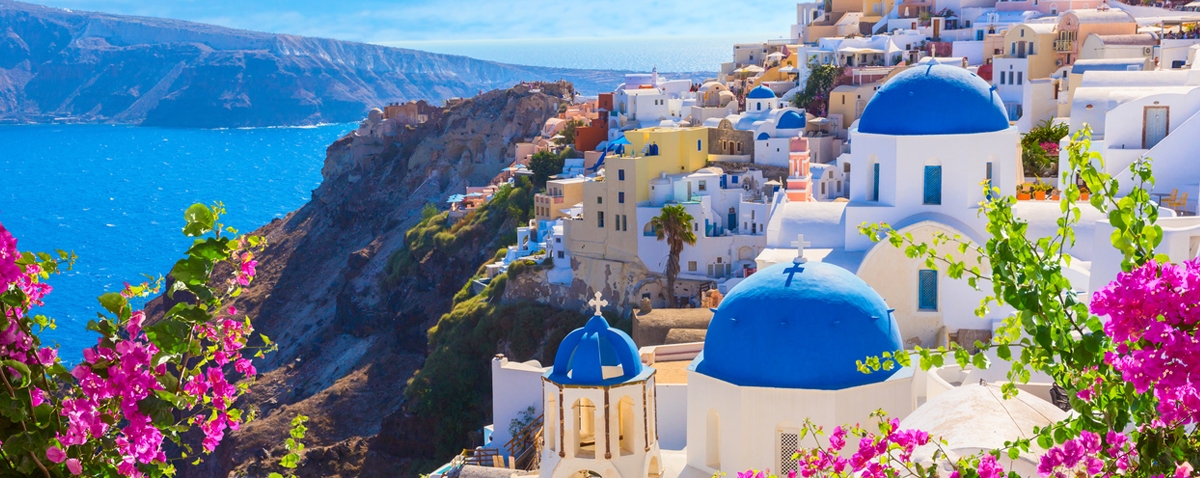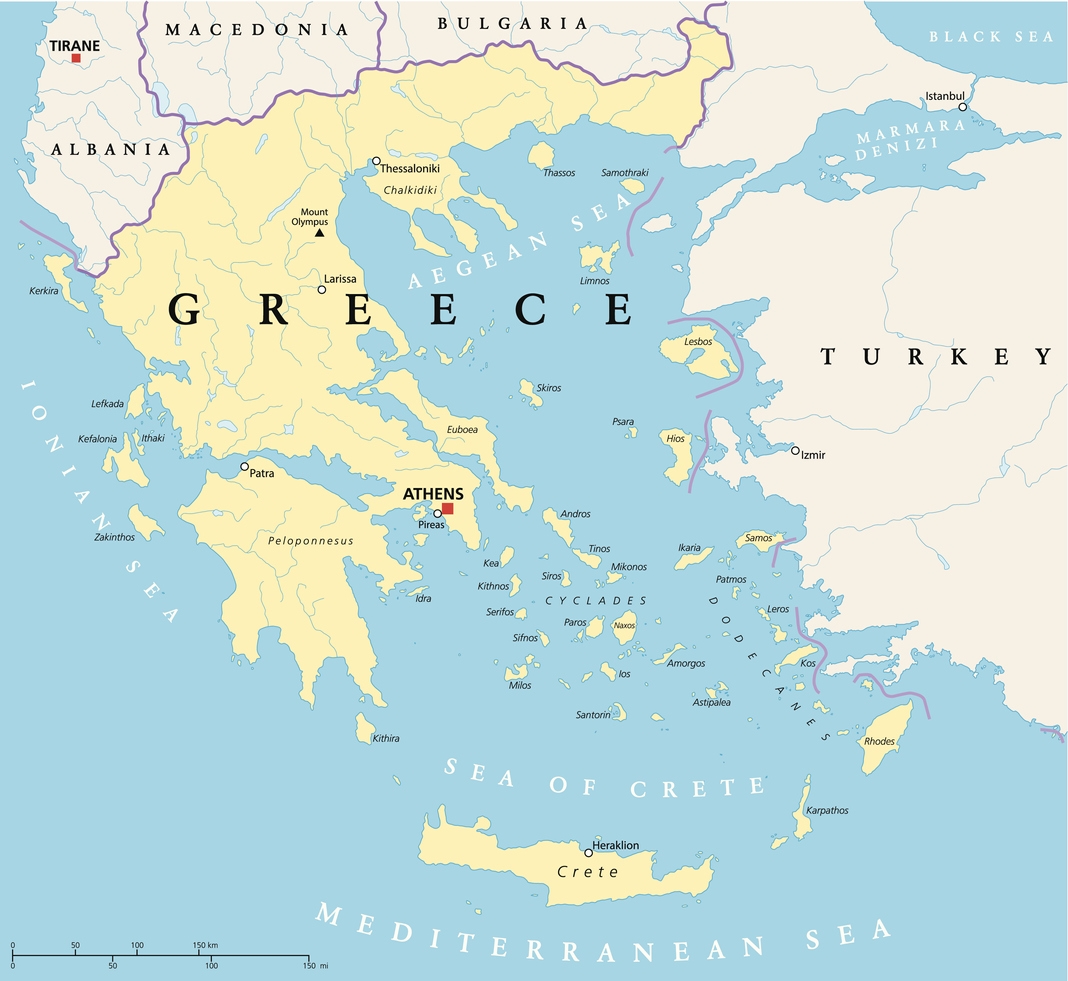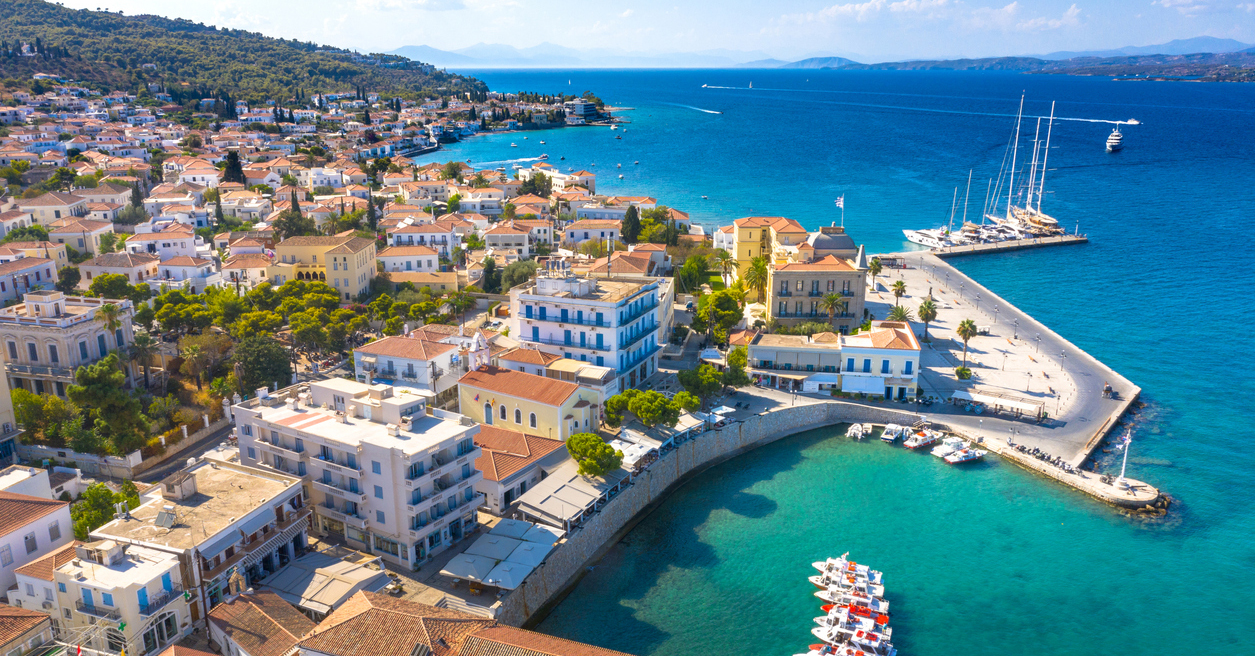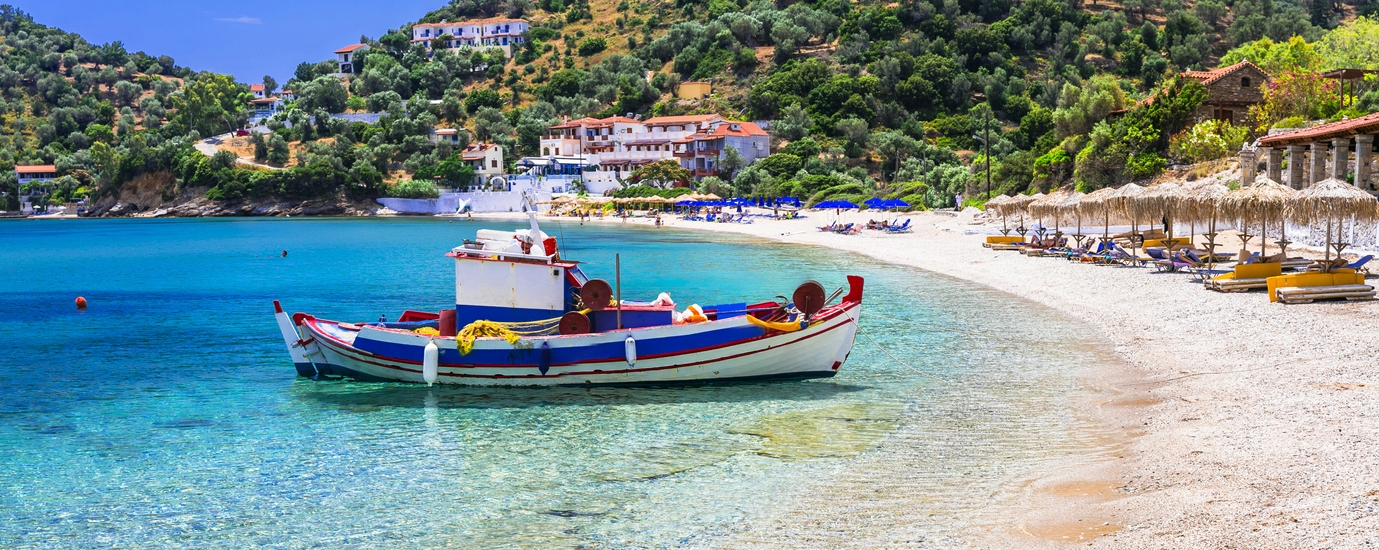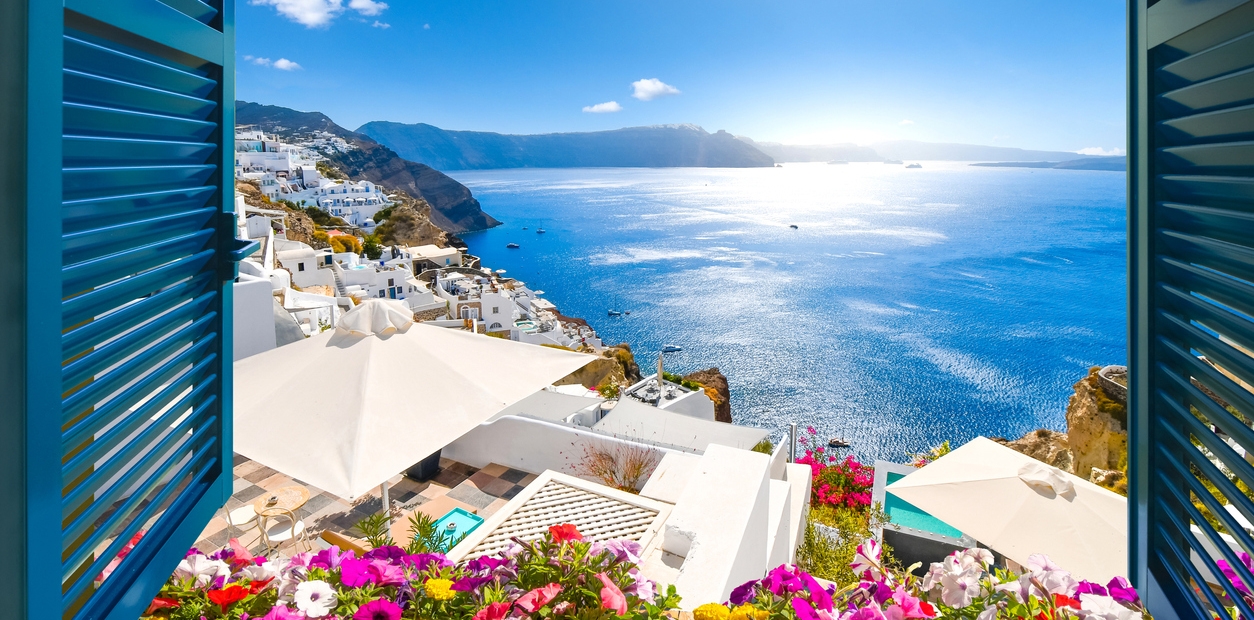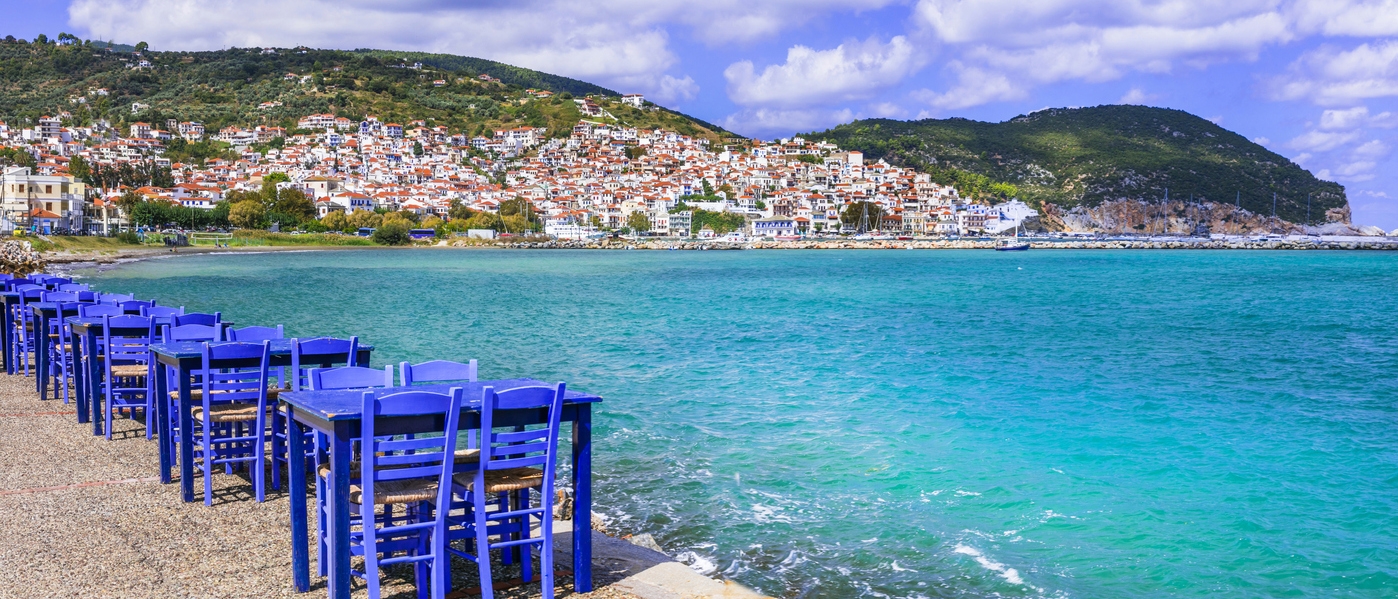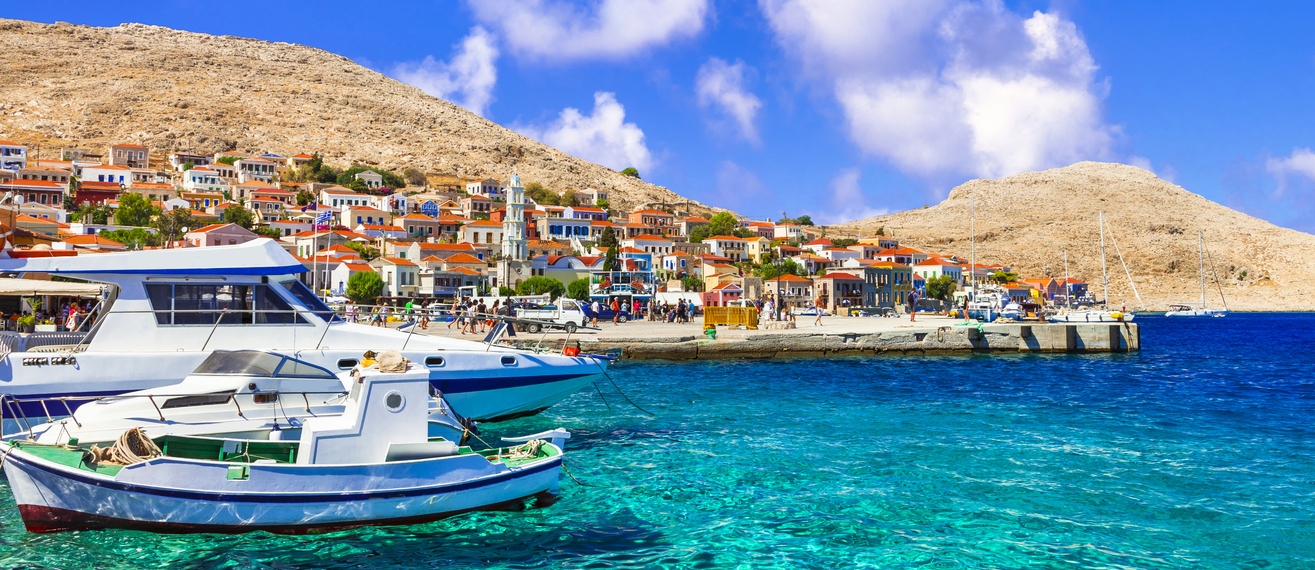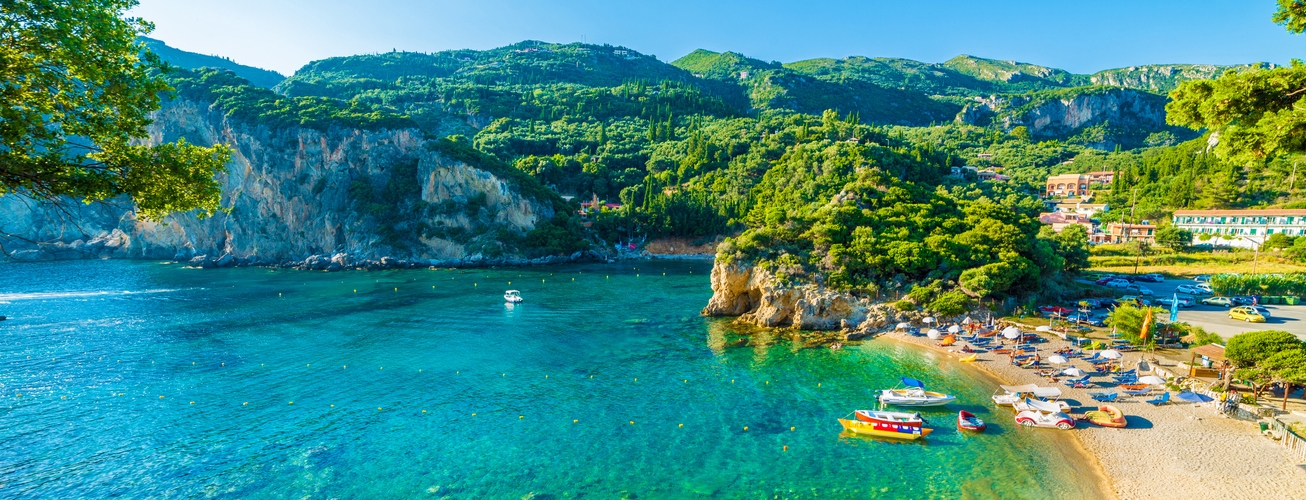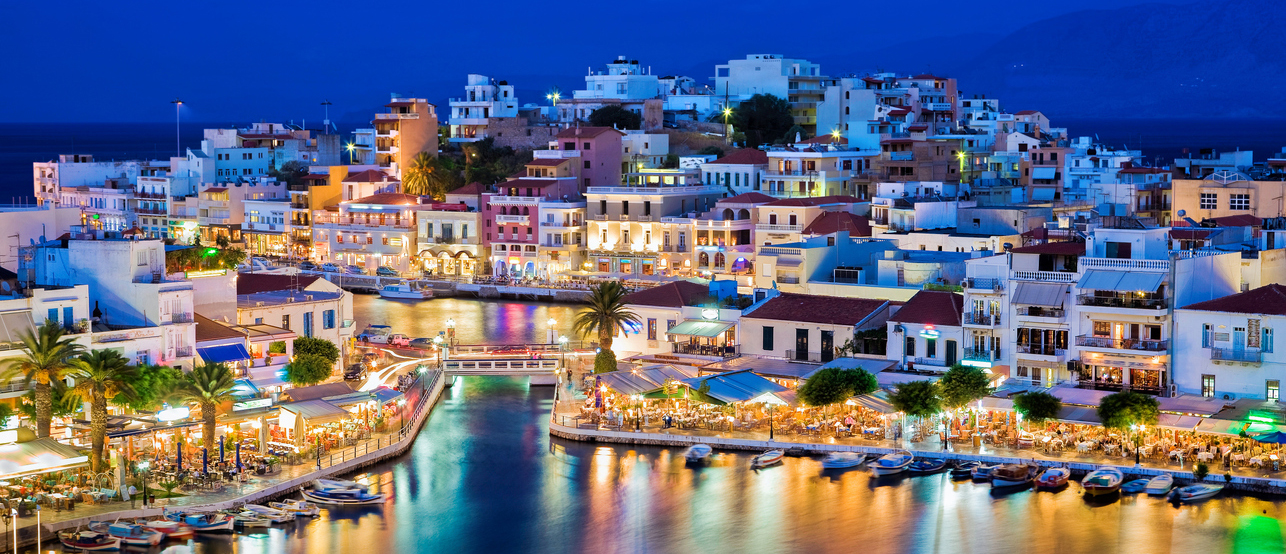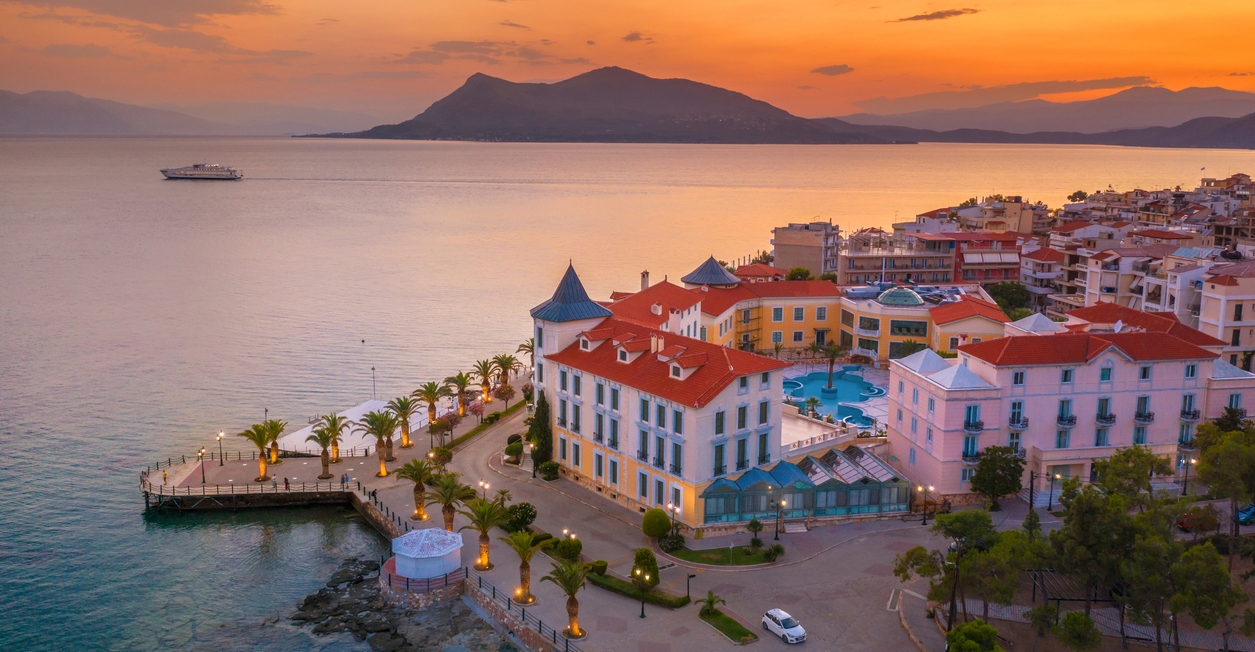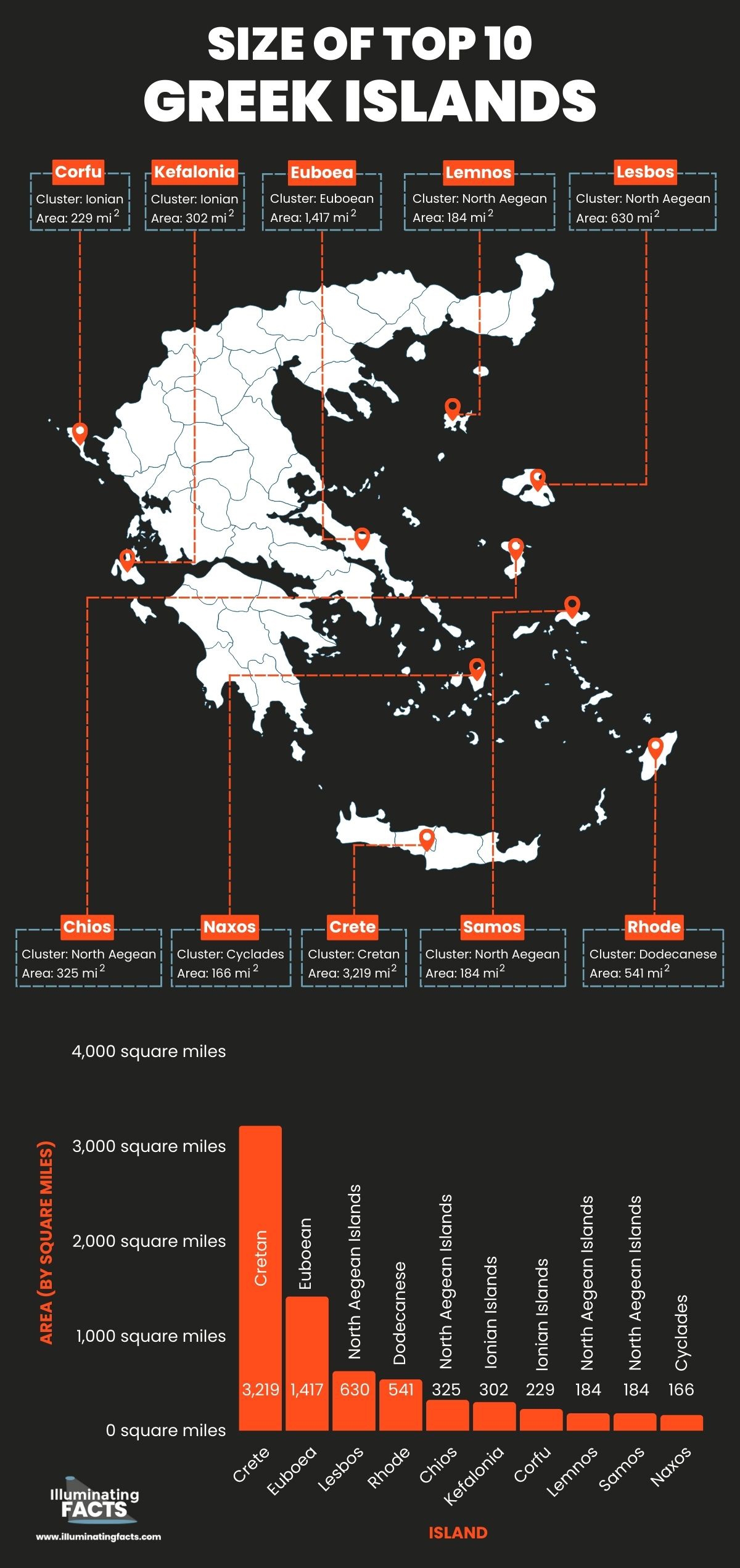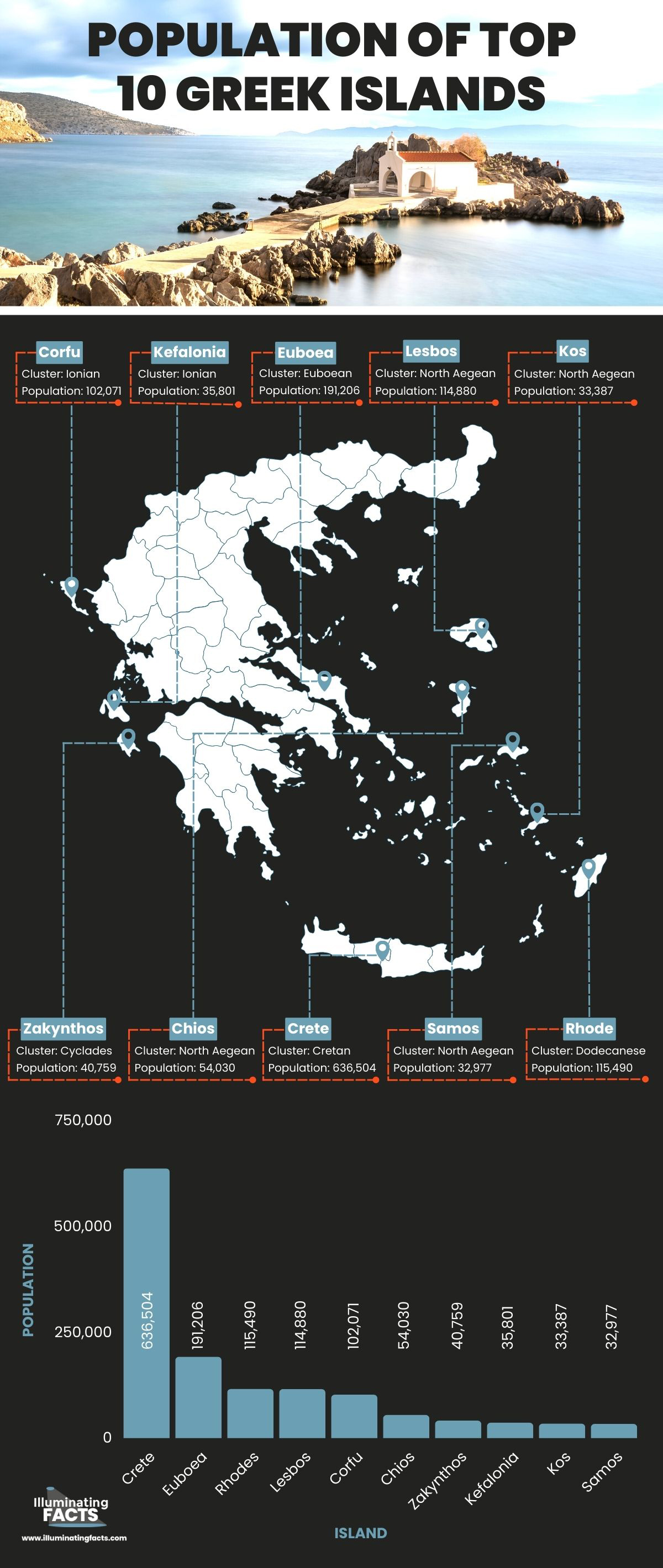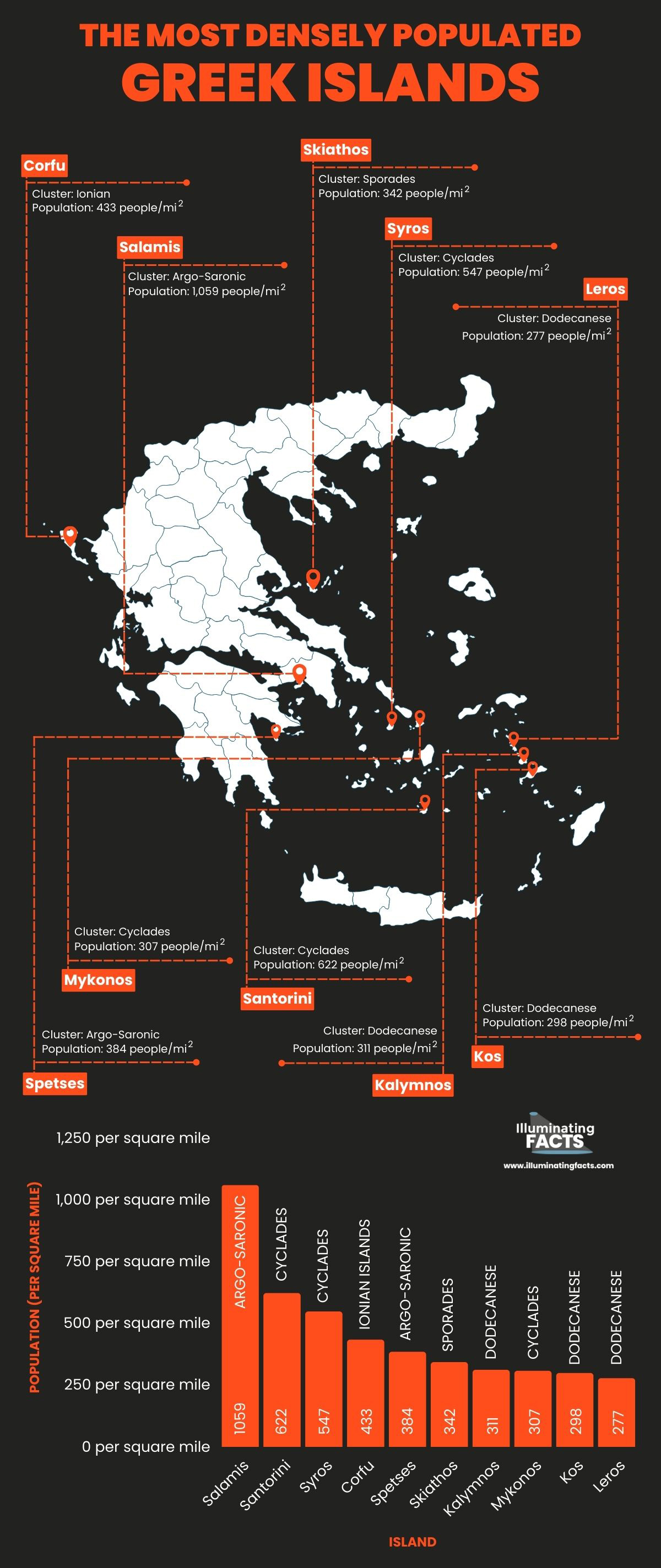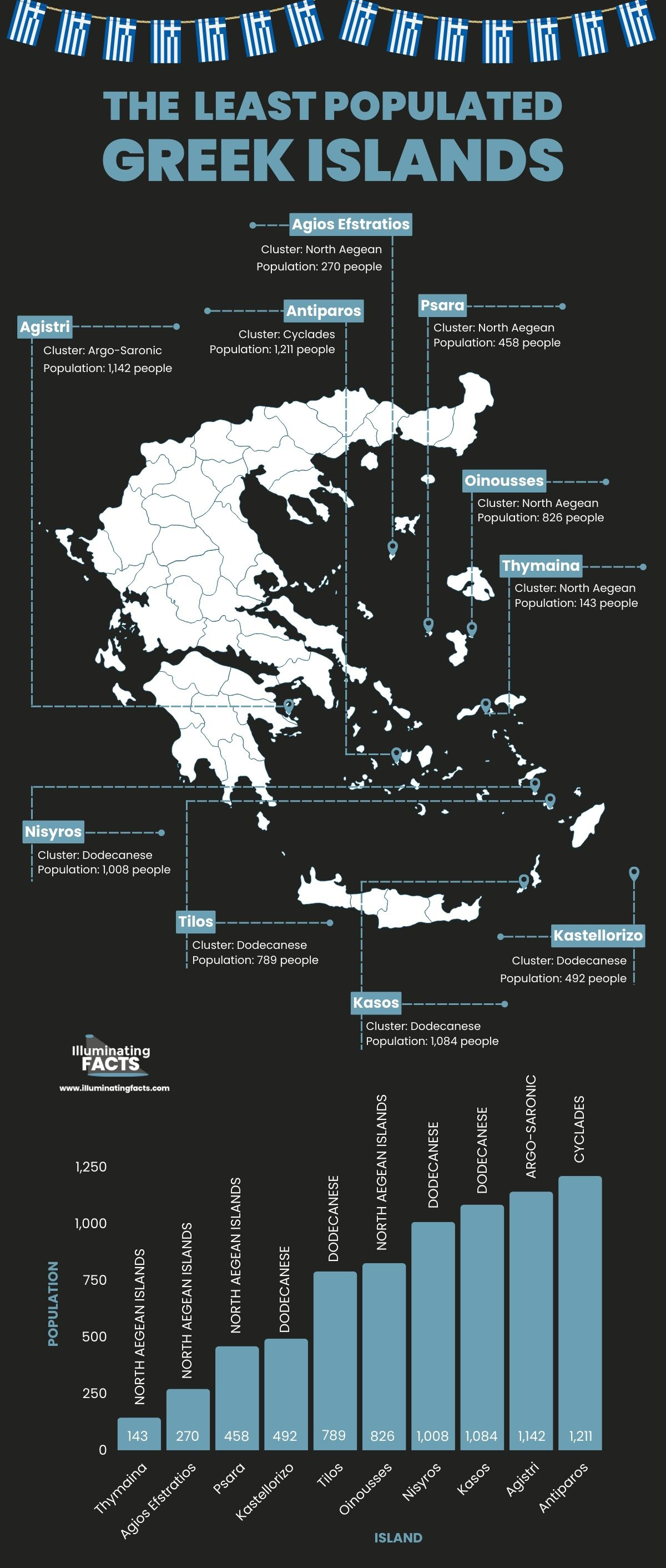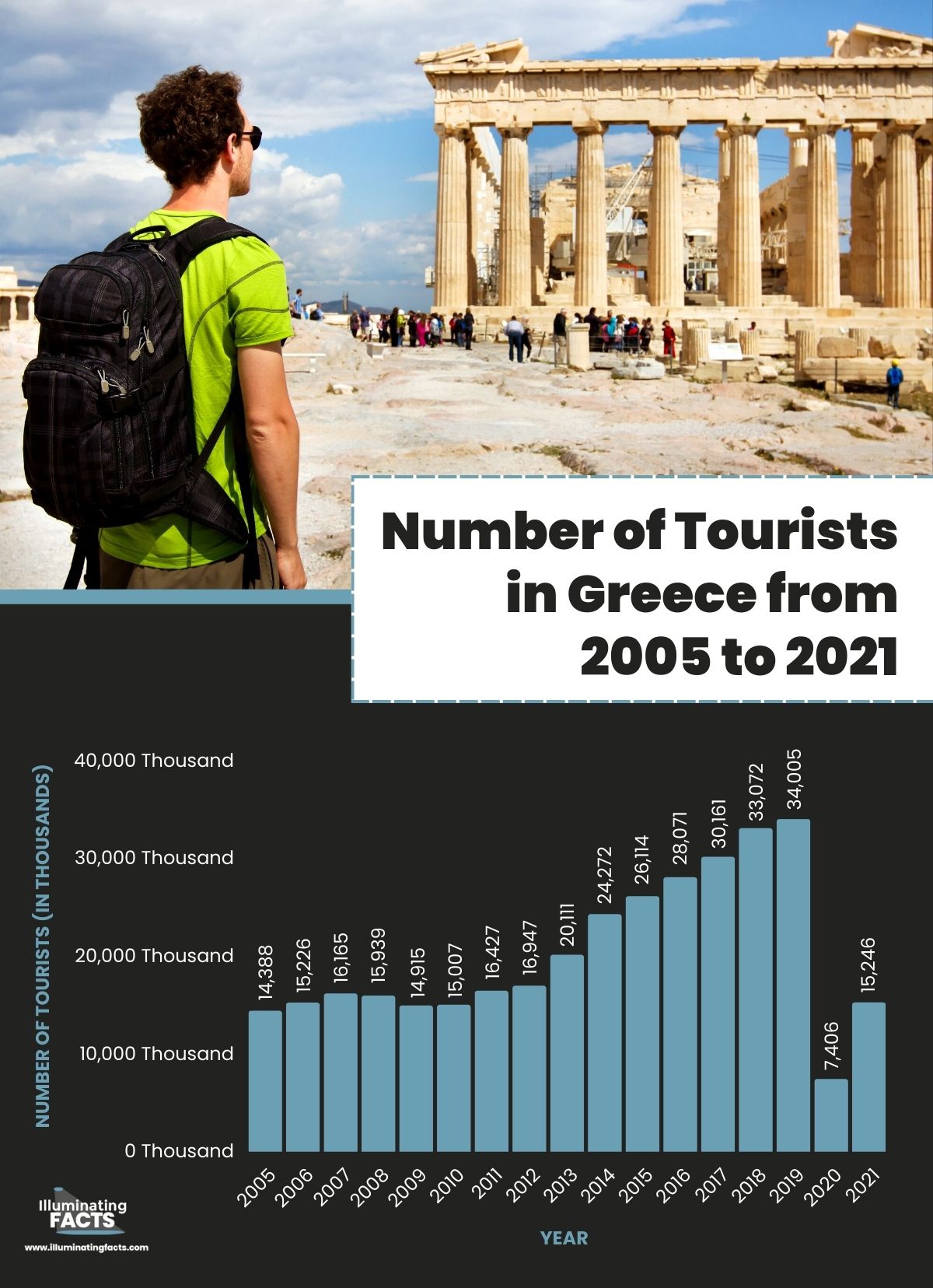There are plenty of tourist spots in the world, but only a few are as beautiful as the Greek Islands, which are thousands of islands located to the east of Greece and to the west of Turkey, although there is also a group of islands located to the west of the Greece mainland. It is estimated that the number of islands within the Greek Islands can be 1,200 to more than 6,000 if you count the very small islands in between the larger islands in the area.
However, despite the many islands in the location, there are only about 200 islands that are inhabited by locals. So, what exactly are the Greek Islands? What is its history? And how big are the main islands? We will find out as we take a look at the Greek Islands by the numbers.
What are the Greek Islands?
The Greek Islands are a specific group of islands that can vary in size. The largest island in the area is Crete, which is located to the southeast of the Greece mainland and at the southern portion of the Aegean Sea, an embayment of the Mediterranean Sea that is right between Asia and Europe. The second largest island in the Greek Islands is Euboea, also known as Evvia. Euboea is separated from the Greece mainland by the Euripus Strait, a 60-meter wide channel that is considered to be a part of the Central Greece region.
Because of the thousands of islands in the Greek Islands, they are often divided into different clusters in order to make it easier to distinguish them. [1] The clusters in the Greek Islands are:
- Argo-Saronic Islands – located near Athens in the Saronic Gulf.
- North Aegean Islands – located near the west coast of Turkey.
- The Cyclades – a large collection of islands that is located at the center of the Aegean Sea.
- Sporades – a small group of islands near Euboea.
- Dodecanese – located in the southeast between Turkey and Crete.
- Ionian Islands – located in the Ionian Sea and to the west of the Greece mainland.
There are also islands that are not considered to be part of the Greek Islands, even though they are located within the area. These islands include the islets surrounding Crete and Euboea, as well as the Peloponnese, which is technically an island in the south of Greece but is not considered a part of the Greek Islands.
A Brief History of the Greek Island Clusters
Because of the rich history of Greece, it is already expected that some of the islands in the Greek Islands will have a bit of history, especially when it comes to who inhabited the islands situated in the area. To know more, here is a brief history of the many islands in the Greek Islands.
Argo-Saronic Islands
The Argo-Saronic Islands are connected to the mainland areas of Attica and Peloponnese in terms of history. The most important moment in Greek history that happened within the area of the Argo-Saronic Islands is the Battle of Salamis, which took place in 480 BC and was a battle between the Greek city-states of Themistocles and the King Xerxes of the Persian Empire. What’s interesting about the Battle of Salamis is that it was mainly a naval battle and was fought in the straits located between Salamis and the mainland of Greece. The battle resulted in the victory of the Greeks, and the Persian Empire failed to conquer or capture Peloponnese. [2]
North Aegean Islands
The group of islands with one of the richest histories in Greece is the North Aegean Islands, which is a group of disconnected islands found north of the Aegean Sea. What’s fascinating about the North Aegean Islands is that they are relatively close to Turkey, which was once a territory of the Persian Empire. During 5000 BC, the North Aegean Islands became a permanent settlement for the Aegean population. Then, the islands would be used as hubs for trade and shipping for the Aegeans. [3]
However, by the 5th century BC, the North Aegean Islands were conquered by the Persian Empire, specifically during the Greco-Persian Wars. In 468 BC, the inhabitants of the North Aegean Islands were freed and formed an alliance with Athens, although, in the following years, their allegiance would often switch from Athens to Sparta. The North Aegean Islands would later become a part of the Roman Empire before becoming involved in the War of Independence in Greece in the early 1820s. However, the North Aegean Islands would not officially become a part of Greece until 1912, when the Ottoman Empire let go of its control of the islands during the First Balkan War.
Cyclades
The Cyclades is another group of islands with a rich history, as it serves as the crossroads between Asia Minor, the Near East, Europe, and Africa, so it is expected that the culture of the Cyclades would be an amalgamation of all the cultures of those regions. Sailors would often stop over in the Cyclades before heading to different islands or regions within the Aegean Sea. While trade is one of the main activities done in the Cyclades, it also became one of the battlefields for many wars because of where it is located. [4]
The Persian Empire tried to take control of the Cyclades, as conquering the islands in the area would allow the Empire to have better navigation in the Aegean Sea and have an advantage over the Greeks. However, the Greek city-states would often repel the Persian Empire in the Cyclades. It would eventually be controlled by the Ottoman Empire before officially becoming a part of Greece in the 1830s.
Sporades
The Sporades islands have gotten their name from the Greek word “Sporades,” which means “scattered.” True to its name, the Sporades is a group of islands that are scattered throughout the area near Euboea, the second-largest island in the Greek Islands. The Sporades were mainly an ally to the Greeks during ancient times, but because of the islands’ location, they were constantly invaded and used as battlefields in numerous battles. [5]
During the Byzantine years, Sporades was used as a place of exile while also being the hub for pirates. Much like most of the islands in the Greek Islands, Sporades also became a territory of the Ottoman Empire before they participated in the Greek War of Independence in 1821. The Sporades was finally an official section of Greece in 1881.
Dodecanese
The Dodecanese is a history-rich group of islands that have been a major factor in the crossing or intertwining of many cultures in Greece and nearby countries in Europe and Asia. Historians speculate that the first inhabitants of the Dodecanese islands were the Iliads and the Telchines, and then the islands would later be occupied by the Achaes and the Cares, who would participate in the infamous Trojan War, according to Homer. [6] In the Byzantine years, the citizens of the Dodecanese islands follow Christianity as their primary religion. However, their faith blurred when different groups, like the Arabs and Ottomans, occupied the islands.
The islands of Dodecanese would remain under the control of the Ottoman Empire for many years, and they were sold to the Italians in 1912. From there, the culture of the Italians became embedded in the Dodecanese islands. In addition to the culture, the Italians also improved the quality of life of its inhabitants and tourists, as they added public works, buildings, and ports. In 1947, Dodecanese was officially given back to Greece.
Ionian Islands
The Ionian Islands are arguably some of the most mysterious groups of islands in Greece in terms of history, as no one actually knows the ancient origins of the inhabitants of the islands. However, historians speculate that the first inhabitants of the islands came during Paleolithic times, and their traces are seen in various islands like Corfu Island and Kefalonia Island. Furthermore, Homer would often reference the Ionian Islands in different parts of the Odyssey, mainly the Lefkada Island and the Corfu Island. [7]
By the 2nd century BC, the Ionian Islands were controlled by the Roman Empire, although they would constantly get attacked by pirates. After the reign of the Roman Empire was over, the Ionian Islands were controlled by the Venetians before they passed the islands to the French in 1799. But, one of the islands, Lefkada, was controlled by the Ottoman Empire from 1476 to 1684. The British then got a hold of the islands from 1815 to 1864 and would eventually be part of Greece again.
The Cretan and Euboean Islands
Even though Crete and Euboea are not considered to be part of any cluster, they are still two of the Greek Islands in the Aegean Sea. Because these islands are not part of clusters, they are regarded as clusters of their own, and these clusters are the Cretan and Euboean islands. Take a look at a few details about the Cretan and Euboean islands below.
Cretan Island
The Cretan island, known simply as Crete, is a large island located to the south of the Greek Islands. To the north of Crete are the Cyclades islands, while the Dodecanese islands are found in the northeast. Then, to the northwest of Crete is Peloponnese.
Besides being the largest of the Greek Islands, Crete is also the island with the most population and is the 88th largest island in the world. Crete serves as a symbol for the southern border of the Aegean Sea. The capital of Crete is Heraklion, which is located on the northern shore of the large island.
Crete has been mentioned in different stories connected to Greek mythology, and in those stories, Europa, the moon goddess, was the first queen of Crete. King Minos would later become the ruler of Crete. According to legends, King Minos was punished by Poseidon by refusing to sacrifice a bull as an offering, and the punishment was that King Minos’s wife would fall in love with a bull. The relationship between the bull and King Minos’s wife would result in the creation of the Minotaur. [8]
In terms of the history of the Cretan island, historians discovered that Ancient Crete was the birthplace of the Minoan civilization, which is considered to be one of the most influential civilizations on Earth. It is the Minoan civilization that built the palace-states on the island, like the Zakros Palaca and the Phaestos Palace. The Minoan civilization would, unfortunately, be wiped out after the eruption of the volcano in Santorini caused huge waves to strike Crete. Although a few people within the civilization managed to survive the waves, those few would be eradicated by the Acheans and Dorians, who would later invade the island.
Crete would eventually be occupied by the Venetians and the Ottoman Empire. The Ottoman Empire would then give independence to Crete following the negotiations initiated by a Greek statesman named Eleftherios Venizelos. Crete would remain an independent state until 1913, when it was reunited with Greece.
Euboean Island
The second-largest island in the Greek Islands is Euboea, also known as Evvia and Evia. Euboea is located to the east of mainland Greece and is separated by the Euripus Strait. During ancient times, Euboea has two main cities, namely Eretria and Chalcis. [9]
The Ionian Greeks were the first ones to settle on the island, and these people came from Attica. Eretria and Chalcis were once rival cities, and historians believe that they were equal in power during the time of their rivalry. However, Eretria would be destroyed by the Persian Empire. Much like most islands in the Greek Islands, Euboea would become a territory of the Venetians, and then the Ottoman Empire took control of the island. After the Greek War of Independence in the 1830s, Euboea became an official territory of Greece.
The Sizes of the Main Greek Islands
Because of how many islands there are in the Greek Islands, it is quite impossible to list down every single island in that area and compare their sizes, and some of those islands don’t even have official names. Luckily, there are various sources that indicate the main islands in the Greek Islands, and there are about 32 that are considered as main islands. When we compare the sizes of these Greek Islands, you will see just how big Crete and Euboea are compared to the other main islands. Here are the stats on the sizes of the main Greek Islands, from the biggest to the smallest. [10]
| Sizes of the Main Greek Islands (by Square Miles) | ||
| Island | Island Cluster | Area (by Square Miles) |
| Crete | Cretan | 3,219 |
| Euboea | Euboean | 1,417 |
| Lesbos | North Aegean Islands | 630 |
| Rhodes | Dodecanese | 541 |
| Chios | North Aegean Islands | 325 |
| Kefalonia | Ionian Islands | 302 |
| Corfu | Ionian Islands | 229 |
| Lemnos | North Aegean Islands | 184 |
| Samos | North Aegean Islands | 184 |
| Naxos | Cyclades | 166 |
| Zakynthos | Ionian Islands | 157 |
| Thassos | North Aegean Islands | 147 |
| Andros | Cyclades | 147 |
| Lefkada | Ionian Islands | 117 |
| Karpathos | Dodecanese | 116 |
| Kos | Dodecanese | 112 |
| Kythira | Ionian Islands | 108 |
| Icaria | North Aegean Islands | 99 |
| Skyros | Sporades | 81 |
| Paros | Cyclades | 75 |
| Tinos | Cyclades | 75 |
| Samothrace | North Aegean Islands | 69 |
| Milos | Cyclades | 58 |
| Kea | Cyclades | 51 |
| Amorgos | Cyclades | 47 |
| Kalymnos | Dodecanese | 42.5 |
| Ios | Cyclades | 41.7 |
| Kythnos | Cyclades | 38.4 |
| Astypalaia | Dodecanese | 37.2 |
| Ithaca | Ionian Islands | 37.1 |
| Salamis | Argo-Saronic | 37.1 |
The Main Greek Islands with the Largest Population
In terms of population, it is clear that Crete and Euboea will have more inhabitants or residents compared to other islands simply because of their size. However, despite how small some of the islands are in the Greek Islands, some of them have more than 30,000 residents, and there are even a few that has more than 100,000. Here is a graphic that shows the population of the main Greek islands so that you will see just how many residents are in the area. [10]
| Population of the Main Greek Islands | |
| Island | Population |
| Crete | 636,504 |
| Euboea | 191,206 |
| Rhodes | 115,490 |
| Lesbos | 114,880 |
| Corfu | 102,071 |
| Chios | 54,030 |
| Zakynthos | 40,759 |
| Kefalonia | 35,801 |
| Kos | 33,387 |
| Samos | 32,977 |
| Lefkada | 22,652 |
| Syros | 21,507 |
| Naxos | 18,904 |
| Lemnos | 16,992 |
| Thasos | 13,770 |
| Paros | 13,715 |
| Tinos | 10,000 |
| Andros | 9,221 |
| Icaria | 8,423 |
| Karpathos | 6,226 |
| Milos | 4,977 |
| Kythira | 4,041 |
| Skyros | 2,994 |
| Samothrace | 2,859 |
| Kea | 2,455 |
| Amorgos | 1,973 |
The Most Densely Populated Greek Islands
As we have mentioned, there are several islands in the Greek Islands that still have a large population despite their size. Interestingly, there are also islands that are densely populated by residents, which meant that more people are living close together on those islands compared to the others. Here is a list of the most densely populated Greek Islands. [10]
| The Most Densely Populated Greek Islands (Per Square Mile) | ||
| Island | Island Cluster | Population (Per Square Mile) |
| Salamis | Argo-Saronic | 1,059 |
| Santorini | Cyclades | 622 |
| Syros | Cyclades | 547 |
| Corfu | Ionian Islands | 433 |
| Spetses | Argo-Saronic | 384 |
| Skiathos | Sporades | 342 |
| Kalymnos | Dodecanese | 311 |
| Mykonos | Cyclades | 307 |
| Kos | Dodecanese | 298 |
| Leros | Dodecanese | 277 |
The Least Populated Greek Islands
As opposed to the most populated Greek Islands, there are also islands in the area that aren’t as populated. Some of the islands still have about a thousand people living in them, but those islands don’t really have great resources, so most of the residents would often visit other islands via boat to get food and supplies. Here are the least populated Greek Islands. [10]
| The Least Populated Greek Islands | ||
| Island | Island Cluster | Population |
| Thymaina | North Aegean Islands | 143 |
| Agios Efstratios | North Aegean Islands | 270 |
| Psara | North Aegean Islands | 458 |
| Kastellorizo | Dodecanese | 492 |
| Tilos | Dodecanese | 789 |
| Oinousses | North Aegean Islands | 826 |
| Nisyros | Dodecanese | 1,008 |
| Kasos | Dodecanese | 1,084 |
| Agistri | Argo-Saronic | 1,142 |
| Antiparos | Cyclades | 1,211 |
Uninhabited Greek Islands
While most of the islands in the Greek Islands have residents, there are some that are still uninhabited. There are many reasons why these islands remain uninhabited, but the two most common reasons why are because the islands are too small to inhabit, and there may not be a lot of resources available in those locations. Here is a list of uninhabited Greek islands.
Argo-Saronic Islands
- Agios Georgios
- Agios Georgios Salaminos
- Agios Ioannis Diaporion
- Agios Thomas Diaporion
- Dia
- Falkonera
- Fleves
- Katramoniso
- Kyra Aiginis
- Laousses Islets
- Leros Salaminos
- Modi Porou
- Moni Aiginas
- Patroklos
- Platia
- Platia Aeginis
- Psili
- Psyttaleia
- Revythousa
- Romvi
- Spetsopoula
- Stavronisi Hydras
- Trikeri Hydras
- Velopoula
- Ypsili Diaporion
- Ypsili Argolidos
Cyclades
- Christiana
- Despotiko
Dodecanese
- Imia
Ionian Islands
- Madouri
- Omfori (private property)
- Schiza
Number of Tourists Visiting Greece Per Year
Greece is arguably one of the most popular tourist destinations in the world, so it wouldn’t be surprising that the country receives thousands and even millions of tourists each year. Throughout the years, the number of tourists visiting Greece continued to increase, but during the global pandemic that started in 2020, the country’s tourism suffered and recorded a low number of 7,406 tourists, which is the lowest number since 2005.
However, as the effects of the global pandemic are slowly fading away, it is expected that Greece’s tourism will bounce back. Take a look at the simple graph below of the number of tourists visiting Greece from 2005 to 2021 to know more about the increase and decrease of tourists in the country. [11]
| Number of Tourists in Greece from 2005 to 2021 (in Thousands) | |
| Year | Number of Tourists (in Thousands) |
| 2005 | 14,388 |
| 2006 | 15,226 |
| 2007 | 16,165 |
| 2008 | 15,939 |
| 2009 | 14,915 |
| 2010 | 15,007 |
| 2011 | 16,427 |
| 2012 | 16,947 |
| 2013 | 20,111 |
| 2014 | 24,272 |
| 2015 | 26,114 |
| 2016 | 28,071 |
| 2017 | 30,161 |
| 2018 | 33,072 |
| 2019 | 34,005 |
| 2020 | 7,406 |
| 2021 | 15,246 |
Interesting Facts about the Greek Islands
- Greece has 18 UNESCO World Heritage sites, and one of these is the Old Town, located on the island of Corfu within the Ionian Islands. [12]
- The Greek Islands are home to some unique animals in the world. These animals include the Cretan Wild Goat, also known as the Kri-kri, as well as 240 different species of birds.
- Even though the Greek Islands have more than 6,000 islands, it is estimated that only 200 of those islands are inhabited or populated by residents.
- Greek mythology suggests that the Greek god of thunder, Zeus, was born in Crete.
- Moreover, Domenico “El Greco” Theotokopoulos, the famous sculptor, painter, and architect, was also born in Crete.
- The island of Rhodes in the Dodecanese is regarded as the most popular tourist spot in Greece.
- The volcano in Santorini that wiped out almost all traces of the Minoan civilization is still active today. There were about 12 big eruptions that happened in the last 200,000 years, and the last recorded eruption occurred in 1950. [13]
- The blue doors that you will see in houses and establishments throughout different Greek Islands are supposed to help ward off evil spirits. The specific blue color used on the doors and even some windows and railings is called “kyanos.”
- An interesting phenomenon that happens in the Greek Islands is that there is 85% sunshine every year in the area. So, it is sunny on about 300 of 365 days in the Greek Islands.
- Greece and its Greek Islands is the third-largest producer of olives, which is a highly valuable food item, especially among chefs and restaurant owners, because of its amazing flavor. The first and second-largest producers of olives are Spain and Italy, respectively.
- Mykonos in the Cyclades islands has the pelican named “Petros” as their official mascot. The pelican was rescued by a fisherman who is also a resident of Mykonos, and although he could fly away from the island, Petros chose to stay. Unfortunately, Petros died on December 2, 1985, but he still lives on as the mascot for the island.
- With over 17 million tourists visiting Greece and the Greek Islands every year, the number of tourists in Greece in a year is more than double the country’s population.
- There are more than 3,000 traditional dances that have originated in Greece and the Greek Islands. You’ll be able to see some of these dances in the various stages set up in different parts of the country.
- The language used in the Greek islands, the Greek language, is arguably one of the oldest languages that are still being utilized today by its inhabitants or residents. It is believed that it has been used for more than 5,000 years.
- Santorini in the Cyclades Islands has colored beaches, namely red, white, and black beaches. The black beaches of Santorini are caused by the volcanic ashes from the volcano’s eruptions in the past. [14]
- Greece has the world record of having the most archaeological museums than other countries. Most of the museums are focused on Ancient Greek history, art, and culture.
- Icaria, an island in the North Aegean Islands, is one of the nine Blue Zones, which is an indicator that the residents in the area live the longest and healthiest compared to other areas or locations. More than 30% of the residents in Icaria live into their 90s. [15]
- Kalymnos is an island in the Dodecanese that is famous for sea sponge production.
- The most visited islands in the Greek Islands are Santorini, Crete, Mykonos, Rhodes, Corfu, and Zante. It is estimated that Santorini receives more than two million tourists each year.
- The only Greek Islands with airports are Crete, Skiathos, Rhodes, Karpathos, Mykonos, Pros, Naxos, Kefalonia, Corfu, and Santorini.
References
[1] Chrissy. (2021, January 1). The Greek Island Groups. Greece Travel Ideas. Retrieved September 6, 2022, from https://greecetravelideas.com/the-greek-island-groups/
[2] Touristorama. Saronic Gulf Islands. Touristorama. Retrieved September 6, 2022, from https://www.touristorama.com/en/argosaronikos
[3] GreekHotels. Aegean & Sporades Islands – History of Aegean & Sporades Islands, Greek Islands. GreekHotels. Retrieved September 6, 2022, from http://www.greekhotel.gr/greek_island_hotels/aegean_islands_hotels/history.asp
[4] The Editors of Encyclopedia Britannica. Cyclades – islands and department, Greece. Encyclopedia Britannica. Retrieved September 6, 2022, from https://www.britannica.com/place/Cyclades
[5] Greeka. Sporades History. Greeka. Rerieved September 6, 2022, from https://www.greeka.com/sporades/history/
[6] Greeka. Dodecanese History. Greeka. Retrieved September 6, 2022, from https://www.greeka.com/dodecanese/history/
[7] Greeka. Ionian History. Greeka. Retrieved September 6, 2022, from https://www.greeka.com/ionian/history/
[8] Greeka. Crete History. Greeka. Retrieved September 6, 2022, from https://www.greeka.com/crete/history/
[9] The Editors of Encyclopedia Britannica. Euboea – island, Greece. Encyclopedia Britannica. Retrieved September 6, 2022, from https://www.britannica.com/place/Euboea-island-Greece
[10] The Island Voyager. (2021, February 24, 2021). A List of All The Greek Islands – A Complete Summary. The Island Voyager. Retrieved September 6, 2022, from https://theislandvoyager.com/islands/list-of-all-greek-islands/
[11] Statista Research Deparment. (2022, August 29). Number of inbound tourists in Greece 2005-2021. Statista. Retrieved September 6, 2022, from https://www.statista.com/statistics/444847/total-number-of-inbound-visitors-in-greece/
[12] Birtles, K. (2021, August 27). 14 fun facts about Greece you never knew. The Real Word by Trafalgar. Retrieved September 7, 2022, from https://www.trafalgar.com/real-word/facts-greece/
[13] Trafalgar Team. (2019, March 29). 7 mind-blowing facts about the Greek Islands. The Real Word by Trafalgar. Retrieved September 7, 2022, from https://www.trafalgar.com/real-word/7-travel-facts-about-the-greek-islands/
[14] Pedgeon, K. (2019, January 23). 10 Interesting Facts About Greece. Cruise and Tour. Retrieved September 7, 2022, from https://cruise-tour.com/10-interesting-facts-greece/
[15] Definitely Greece. 35+ Interesting Facts About Greece You Absolutely Have to Know. Definitely Greece. Retrieved September 7, 2022, from https://www.definitelygreece.com/facts-about-greece/

